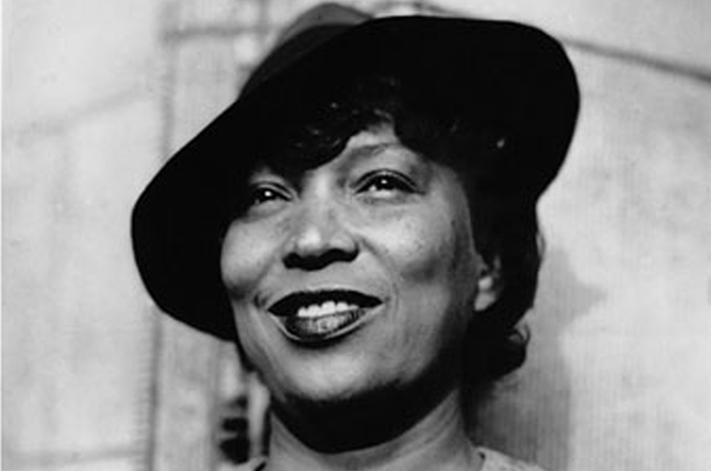Project Description
Using New Interracial Family Evidence to Trouble Jim Crow and Me (and You)
Preparing to share and receive sensitive family history
In this installment, I will use a pseudonym to protect the anonymity of the subject of my critical family history. I am related to the “Kayfred” family of North Carolina by marriage. “Grandpa Kayfred” was a widower and the patriarch of the very large family in a rural region of North Carolina. He was born in 1917 and he lived to be 93 years old with his mental capacity well intact, so he was a wealth of humor, knowledge, and family history. When I spoke with him in the summer of 1993, he was approximately 76 years old and I remember his kindness, his very light brown skin, curly hair, mechanic’s hands and green eyes. I assumed there was some admixture in his African ancestry, but it was not unusual due to the One Drop Rule for many Black folks in my family to have facial features, skin and eye colors, and/or hair types typically associated with Europeans. For years, I heard stories from “Grandpa Kayfred” and others about his violent arguments and exploits with White folks during Jim Crow. While I didn’t wonder about the admixture, I did wonder how “Grandpa Kayfred” survived such experiences within the southern rural territory of the Ku Klux Klan without being jailed, beaten, or worse. It was the county courthouse archives in search of his next of kin, when Grandpa Kayfred was about 90 years old in 2007, that would add a context and credibility to the stories.
I will attempt to demonstrate how learning from key episodes of what Zeus Leonardo calls race-class relations within the informal oral histories of elders like “Grandpa Kayfred”, and seeking archival evidence to support that evidence, may give important revelations. Important secrets were indeed revealed about Grandpa “Kayfred” in relation to his family and Black-White race relations. I will conclude by considering how such information from family evidence can keep troubling Jim Crow and me (and you).
Learning Race-Class Relations from Elders: Key Episodes from an Informal Oral History
Now, such a gesture was a death sentence for Black men in the Jim Crow south at that time, but not only was “Grandpa Kayfred” spared his life, he was neither jailed nor arrested. I knew that lighter-skinned, more European–looking Black folks sometimes earned dubious privileges from Whites, but a slap in the face was well beyond any credible story that I had known for that time period. I also knew that “Grandpa Kayfred” was quite faithful and spiritual and giving and forgiving. Yet, something else must have protected him from Jim Crow justice.
Family Revelations in the County Archives
Rethinking Black-White Race Relations in the Family?
Born in the late 1800s, his White mother and Black father fell in love. She was from a very wealthy and powerful family, which is why she and her husband and children were not targets of the Ku Klux Klan or any other local racists. One condition of her marriage is that she had to give up all of her fortune except for the plot of land for her home. So while her family didn’t like her marrying a Black man, they didn’t completely disown her. The white Kayfred’s are Grandpa’s first cousins and they all knew it. This explains why he got into arguments and fights with White folks and was never arrested or anything.
This additional context explained not only Grandpa’s European phenotype, but also his ability to escape the fate of most Black men in the rural south who slapped a White man in the face who publically questioned his integrity. Now, the family has to grapple with having more immediate heritage to local White Kayfred family members. Distant admixture and the One Drop Rule are one thing, but realizing that your light brown skin and hazel eyes are from the mother of the man who raised you is quite another thing. Clearly, his mother passed away before any of the children or grandchildren would know her and there were likely few pictures of her, especially if she sacrificed her family fortune for love and equity. Still, the family who consistently repeat the family mantra of “I don’t like White people,” continues to come to terms with that statement because they are related to one of those people. Apparently they are related to one of those people with a level of courage, humility, commitment and a sense of equity and sacrifice for love that few people of any color possess then or now, in my opinion.
Where will race relations in the family go from here? How will the White grandmother be incorporated into family pedagogy and oral traditions, particularly with the death of Grandpa Kayfred in 2010? Right now, they seem to be living the contradiction and responding to the news with ambivalence. Irrespective of the White grandmother, they are still largely poor, Black and in the rural South in social times that Dr. Alexander calls The New Jim Crow.
Concluding Thoughts
 Dr. Sherick Hughes, MA, MPA, Ph.D. is Associate Professor with Tenure, and Founder and Director, Interpretive Research Suite & Carter Qualitative Thought Lab Graduate Program Coordinator/Chair, Cultural Studies & Literacies Program Founder and Director, Black Alumni of the School of Education (BASE), School of Education, University of North Carolina, CB #3500, Peabody Hall, Chapel Hill, NC 27599
Dr. Sherick Hughes, MA, MPA, Ph.D. is Associate Professor with Tenure, and Founder and Director, Interpretive Research Suite & Carter Qualitative Thought Lab Graduate Program Coordinator/Chair, Cultural Studies & Literacies Program Founder and Director, Black Alumni of the School of Education (BASE), School of Education, University of North Carolina, CB #3500, Peabody Hall, Chapel Hill, NC 27599
This piece was reprinted by empathyeducates with permission or license. It may not be reproduced in any form without permission or license from the source. We thank the Author, Sherick Hughes,, Ph.D. and Family and History’s Christine E. Sleeter, Ph.D..











